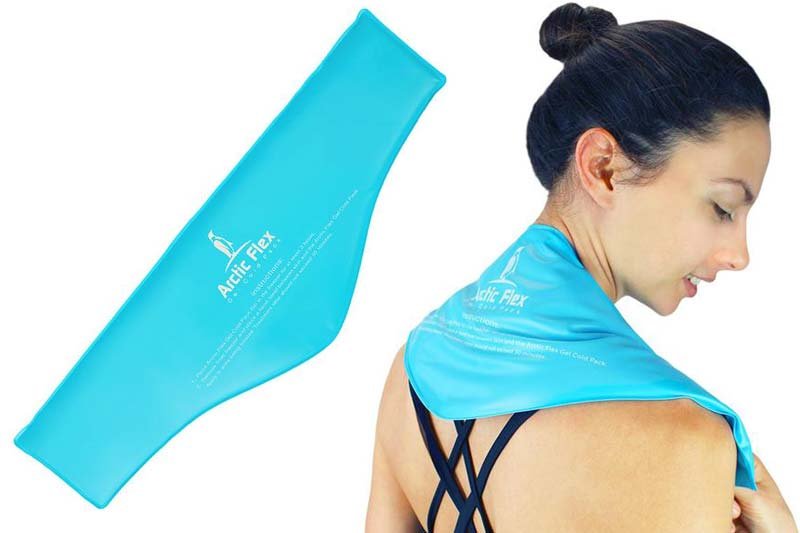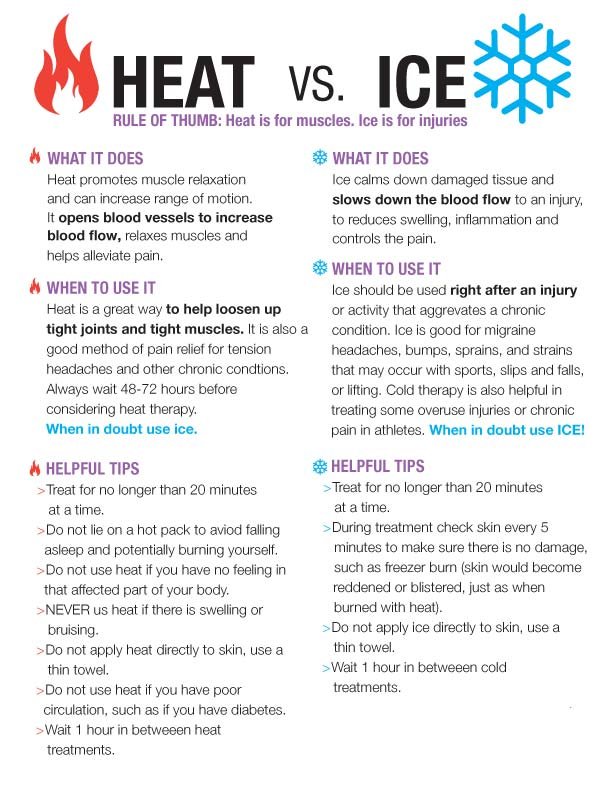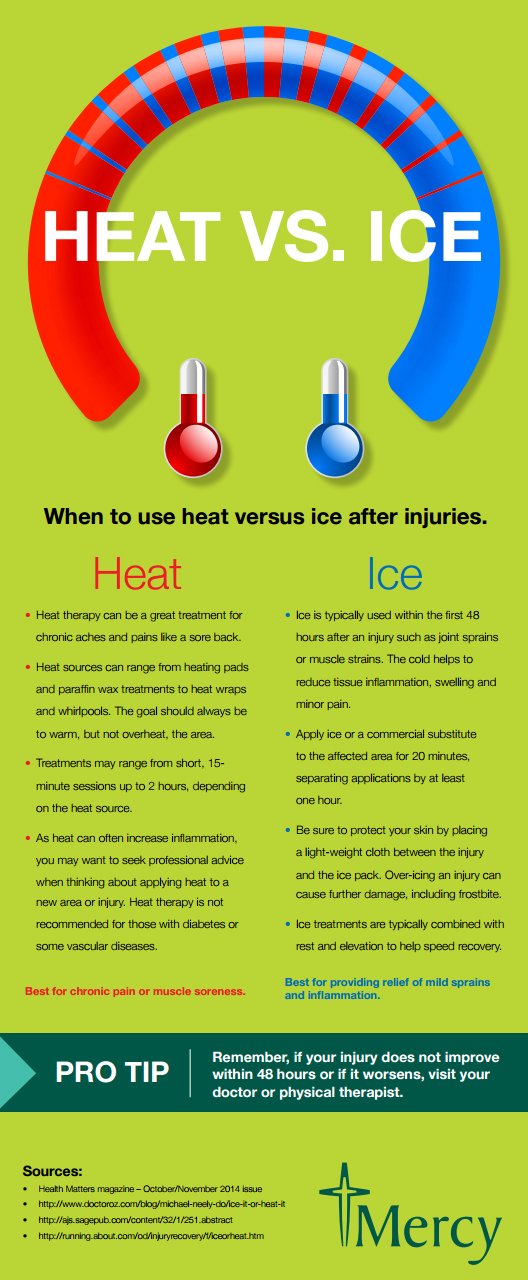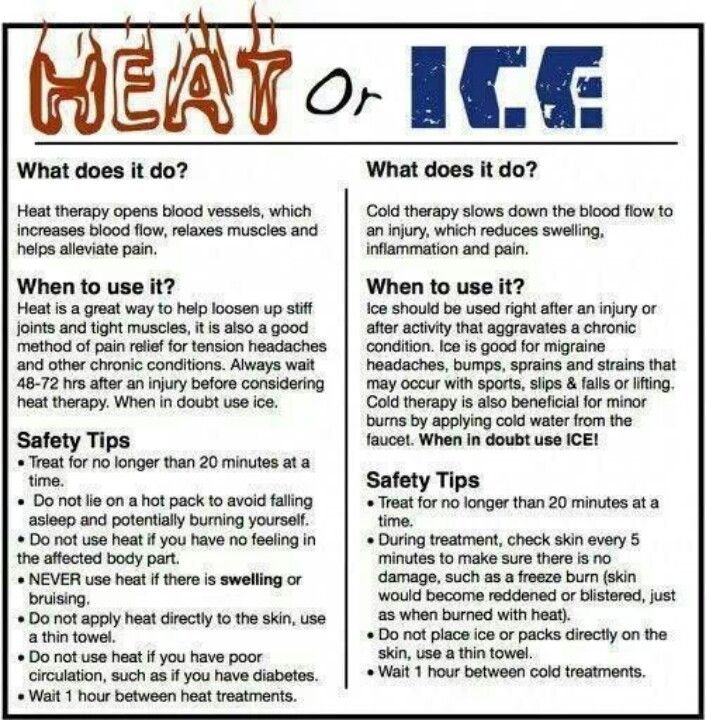4 Do’s and Don’ts of Applying Ice to an Acute Fitness Injury : What is an acute fitness injury? Unlike overuse injuries that typically occur over a long period of time, acute fitness injuries are the result of a single event that results in musculoskeletal trauma. A sprained ankle, a shoulder dislocation, a pulled muscle . . . these are all types of acute fitness injuries that may be aided by the prompt application of cold via an ice pack or something similar.

What Does Cold Application Do?
Referred to as ice therapy, cold therapy, or even cryotherapy, the application of cold to the body has been shown to help relieve pain, reduce swelling, and slow inflammation following an acute injury. How does it do that exactly? Well, it all has to do with how the body reacts to a sudden drop in tissue temperature.
When an ice pack is applied to a swollen ankle, for example, almost immediately, the skin starts to cool off and then the tissues underneath it start losing heat. The blood vessels under the area of application quickly constrict, effectively clamping off blood flow and therefore preventing excess blood from accumulating in the injured tissues.
At the same time, the metabolic processes occurring in the tissues are also slowed down significantly by the cold sensation, mitigating what is known as secondary hypoxic or secondary ischemic injury (when neighboring uninjured cells are compromised by injured cells that are starved for oxygen and nutrients). Pain receptors on the skin also become blocked as nerve conductivity is slowed down by the temperature drop and the injured area is effectively “numbed.”
Do’s and Don’ts of Ice Therapy
Do: Apply a cold pack to the injury right away
Don’t: Apply heat
Studies have shown that the most effective ice therapy is that which is administered right away to an acute injury. The faster you apply ice, the quicker you can halt swelling and preventing pain and the reflexive muscle spasms that accompany pain.
Experts recommend applying ice first intermittently and only applying heat for pain relief after 2 or 3 days once the swelling has completely subsided and the joint has been remobilized.
Do: Apply an ice pack for 15 to 20 minutes at a time
Don’t: Keep ice on your injury too long
Turns out that there is a temporary window of time in which ice application is beneficial. Apply ice too long and you can actually have the reverse effect on your injury leading to stiffness and a delay in recovery.
An extended application of an ice pack or other cold compress can also lead to ice burn, frostbite, and potentially even tissue death from hypoxia (inadequate oxygen supply) – especially if the ice pack is applied directly to skin without a barrier in between.
Do: Rest and elevate your injury while you ice
Don’t: Continue with sports play
If you injure yourself in the middle of a sports game, you may be inclined to quickly ice an injury while sitting on the sidelines before returning to play. This is one of the worst things you can do.
Instead, you should rest and elevate your injured joint or limb while you press a cold pack on it and even apply compression (like with an elastic bandage). Elevation and compression help reduce swelling and thereby the pain caused by the pressure of fluids building up under your skin at the site of injury.
Do: Mobilize your injury once swelling and pain subsides
Don’t: Exacerbate your injury with overuse
Muscle activation is critical to soft tissue recovery, especially in the first day or two after injury. Experts recommend that once intermittent icing has helped relieve most of the swelling and gotten you to a point where movement doesn’t cause much pain, it is important to mobilize the joint with simple stretches and movement.
Overusing the injured limb or joint or returning to normal sports play before you are fully healed, however, can result in a much worse injury down the line. When in doubt, especially for moderate to severe sprains and strains, it is best practice to check with your doctor and get their sign off first before returning to normal fitness activity.
Be Prepared
Quick action plays an important role in limiting the physical fallout from an acute fitness injury. That means being prepared no matter where you are. When it comes to applying something cold, you actually have several methods available to you. In addition to reusable ice packs you keep stored in your freezer, you can also buy disposable cold packs that are chemically activated by shaking or crushing them. In a pinch, fill a plastic bag with ice or toss a wet washcloth in the freezer for a few minutes.
Related Videos about Do’s and Don’ts of Applying Ice to an Acute Fitness Injury :
How To Treat An Injury With Ice
Icing Technique for Acute Injury
https://www.youtube.com/watch?v=T4gSruYgO3M
How Does Icing an Injury Help?
Heat or Ice for an Injury – the answer from a doctor of physical therapy
Does ice reduce swelling or not? Should you ice after an acute injury?
Absolute Best Cold Pack You Can Make Yourself- Better than Gel.
Related Infographics about Do’s and Don’ts of Applying Ice to an Acute Fitness Injury :




4 Do’s and Don’ts of Applying Ice to an Acute Fitness Injury
when should you apply heat to an injury?, alternating ice and heat therapy, how many days should you ice an injury, icing injuries, how does ice reduce inflammation, ice or heat for pulled muscle, ice bag for injuries, hot and cold treatment for sprains,




